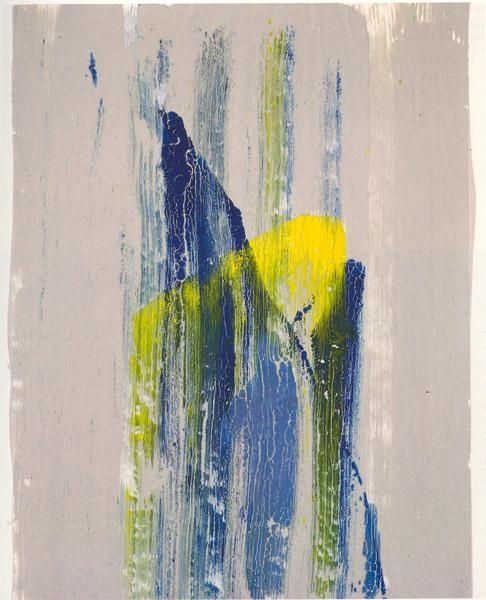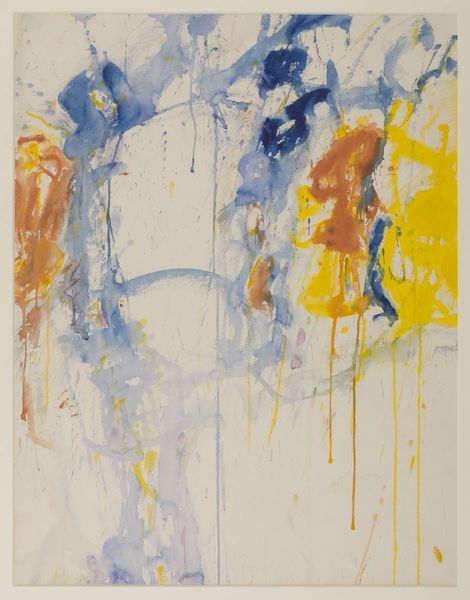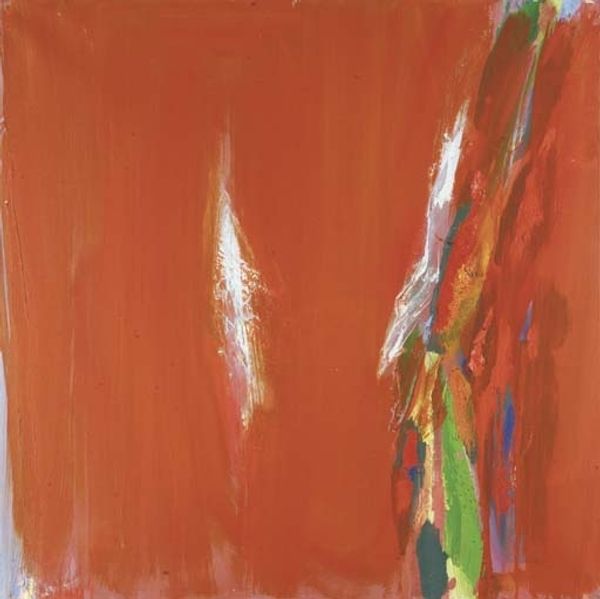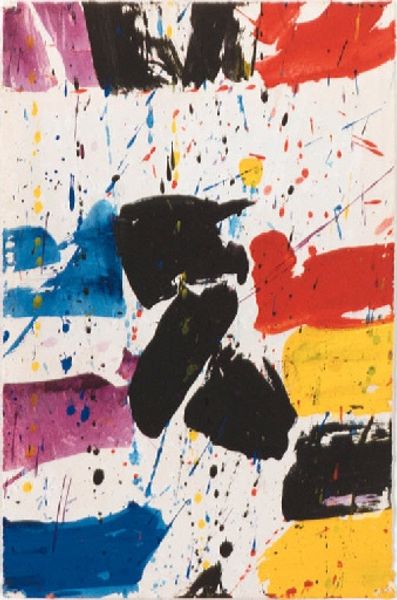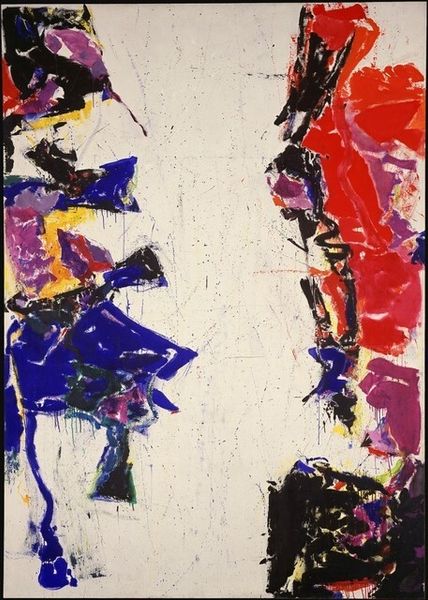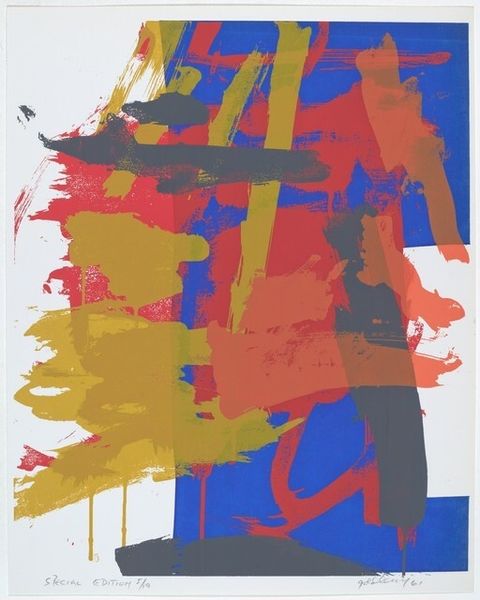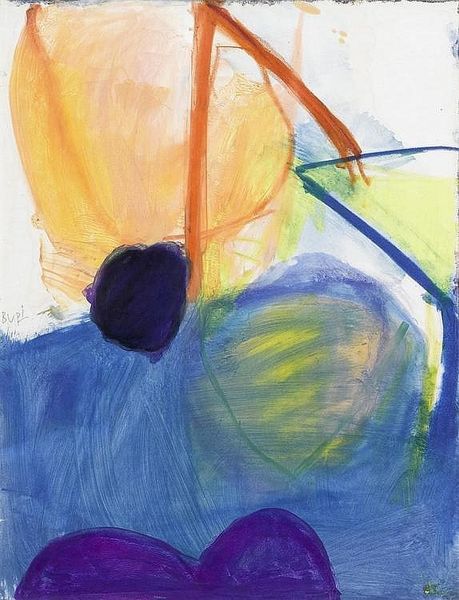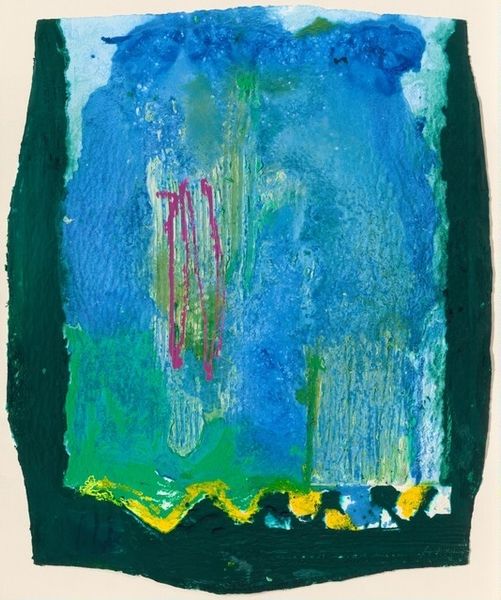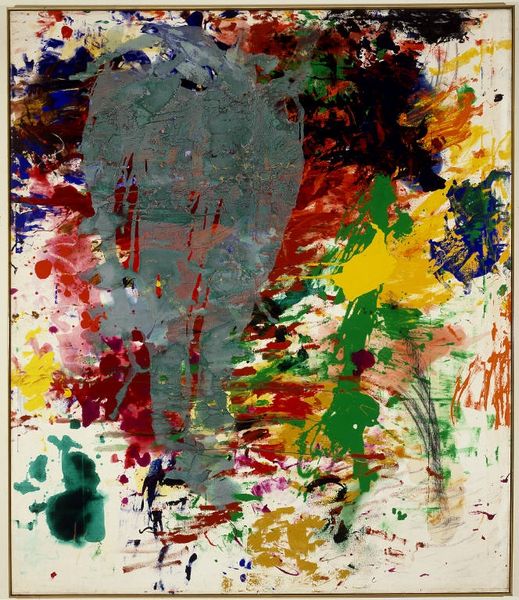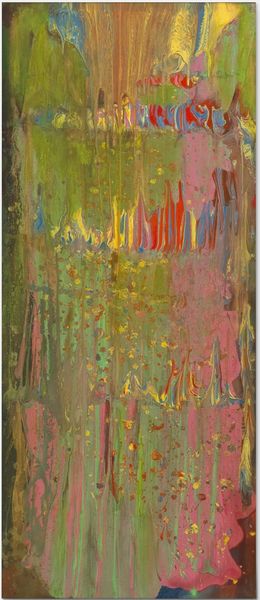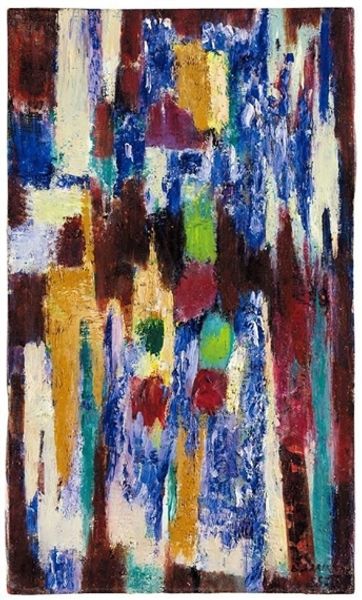
Copyright: Luciano Bartolini,Fair Use
Editor: So, we're looking at Luciano Bartolini's "Berliner Raga 5," from 1983, done in watercolor and acrylic. There's a real sense of gravity here, watching those colors bleed downwards. What do you see in the work beyond the initial impression? Curator: For me, it's about process made visible. Look at the way the watercolor is allowed to drip and run, almost uncontrolled. It's a very physical manifestation of the artistic act, right? We're seeing the direct result of gravity acting upon the materials. Consider how Bartolini valued that action as a component, and in the historical context, how does this compare to other artists from this era playing with similar types of interventions and material uses? Editor: I hadn't thought about gravity as a collaborator! Does the title "Berliner Raga" add another layer to this material-focused reading? Curator: Absolutely. "Raga" suggests improvisation and a set structure – a framework for performance. Perhaps Berlin, in 1983, provided the constraints, a specific socio-political "instrument" from which this improvisation was created and is reflecting upon within the cultural milieu of West Germany in the late Cold War. It asks us to examine our notions of "free" artistic production, does it not? Editor: That's fascinating. So, it's not just about the paint, but also the time, the place, the artistic labor embedded within these materials. Curator: Precisely. Bartolini's piece prompts us to think critically about how material processes, and their conditions of production, can be a language in themselves, offering social commentary and resisting purely aesthetic readings. Editor: I will definitely carry this "materials first" approach as I analyze abstract works from now on. Thank you. Curator: My pleasure. Considering these elements adds incredible depth, wouldn't you agree?
Comments
No comments
Be the first to comment and join the conversation on the ultimate creative platform.
